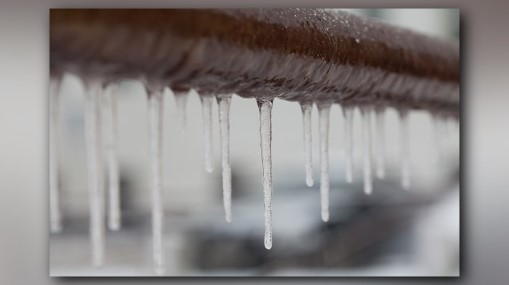Preventing Frozen Plumbing: Effective Strategies for Cold Weather
Preventing Frozen Plumbing: Effective Strategies for Cold Weather
Blog Article
The publisher is making several good pointers regarding Preventing and dealing with frozen pipes as a whole in this content followed below.
:strip_icc()/snow-outdoor-faucet-pipes-4af65d1e5e904fb1aa7bf74071fe5d89.jpg)
Winter can ruin your pipes, particularly by freezing pipes. Right here's exactly how to stop it from taking place and what to do if it does.
Intro
As temperature levels decline, the risk of icy pipes increases, potentially leading to costly repair work and water damages. Understanding exactly how to avoid icy pipelines is essential for house owners in cool environments.
Prevention Tips
Insulating susceptible pipelines
Cover pipelines in insulation sleeves or use warmth tape to shield them from freezing temperatures. Focus on pipes in unheated or exterior areas of the home.
Heating methods
Maintain indoor spaces adequately warmed, especially areas with plumbing. Open up cabinet doors to enable warm air to distribute around pipelines under sinks.
How to identify icy pipes
Look for reduced water flow from faucets, uncommon odors or sounds from pipes, and noticeable frost on exposed pipes.
Long-Term Solutions
Architectural modifications
Take into consideration rerouting pipes far from outside walls or unheated locations. Include extra insulation to attics, basements, and crawl spaces.
Updating insulation
Buy top notch insulation for pipelines, attic rooms, and walls. Proper insulation assists preserve regular temperature levels and reduces the risk of frozen pipes.
Safeguarding Outside Plumbing
Garden hoses and outdoor taps
Separate and drain pipes yard pipes before winter season. Install frost-proof faucets or cover outside faucets with shielded caps.
Recognizing Icy Pipes
What triggers pipelines to freeze?
Pipelines freeze when revealed to temperature levels listed below 32 ° F (0 ° C) for prolonged durations. As water inside the pipelines ices up, it increases, putting pressure on the pipe walls and potentially causing them to burst.
Dangers and problems
Icy pipelines can cause water interruptions, residential or commercial property damage, and pricey repairs. Ruptured pipelines can flooding homes and create considerable architectural damage.
Signs of Frozen Water Lines
Identifying icy pipes early can avoid them from bursting.
What to Do If Your Pipelines Freeze
Immediate actions to take
If you suspect frozen pipes, keep faucets open up to relieve stress as the ice melts. Make use of a hairdryer or towels soaked in warm water to thaw pipes gradually.
Verdict
Avoiding frozen pipes requires positive procedures and fast feedbacks. By understanding the causes, signs, and preventive measures, house owners can protect their plumbing during cold weather.
5 Ways to Prevent Frozen Pipes
Drain Outdoor Faucets and Disconnect Hoses
First, close the shut-off valve that controls the flow of water in the pipe to your outdoor faucet. Then, head outside to disconnect and drain your hose and open the outdoor faucet to allow the water to completely drain out of the line. Turn off the faucet when done. Finally, head back to the shut-off valve and drain the remaining water inside the pipe into a bucket or container. Additionally, if you have a home irrigation system, you should consider hiring an expert to clear the system of water each year.
Insulate Pipes
One of the best and most cost-effective methods for preventing frozen water pipes is to wrap your pipes with insulation. This is especially important for areas in your home that aren’t exposed to heat, such as an attic. We suggest using foam sleeves, which can typically be found at your local hardware store.
Keep Heat Running at 65
Your pipes are located inside your walls, and the temperature there is much colder than the rest of the house. To prevent your pipes from freezing, The Insurance Information Institute suggests that you keep your home heated to at least 65 degrees, even when traveling. You may want to invest in smart devices that can keep an eye on the temperature in your home while you’re away.
Leave Water Dripping
Moving water — even a small trickle — can prevent ice from forming inside your pipes. When freezing temps are imminent, start a drip of water from all faucets that serve exposed pipes. Leaving a few faucets running will also help relieve pressure inside the pipes and help prevent a rupture if the water inside freezes.
Open Cupboard Doors
Warm your kitchen and bathroom pipes by opening cupboards and vanities. You should also leave your interior doors ajar to help warm air circulate evenly throughout your home.

I'm certainly very eager about How to prepare your home plumbing for winter weather and I'm hoping you liked the blog post. Enjoyed reading our blog entry? Please quickly share it. Let others locate it. We love reading our article about Prevent Frozen Pipes .
Automated Marketing Report this page